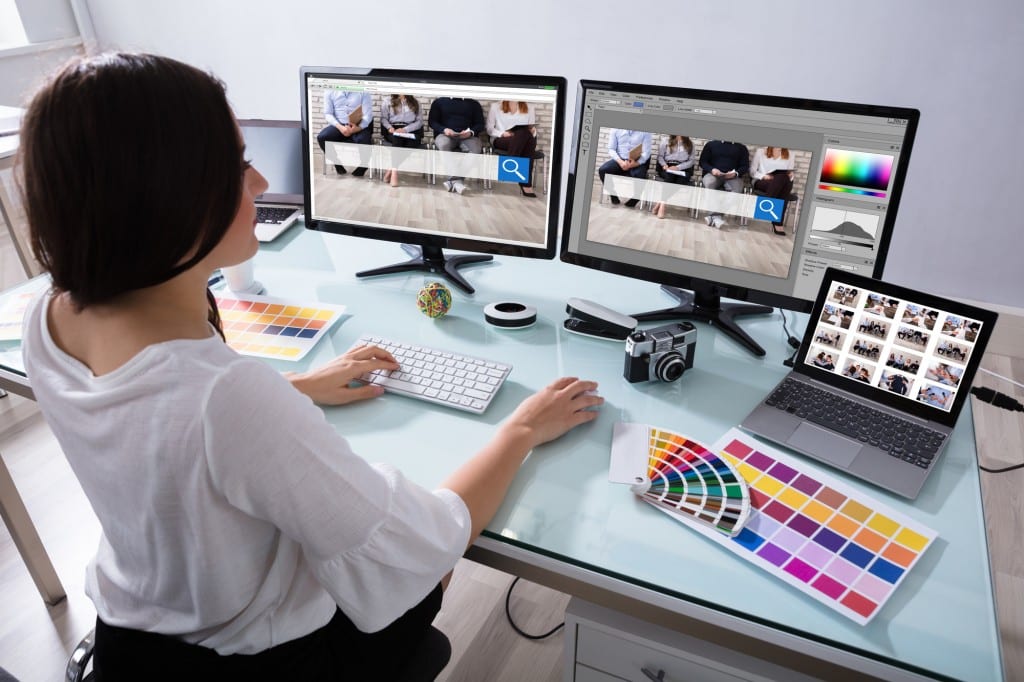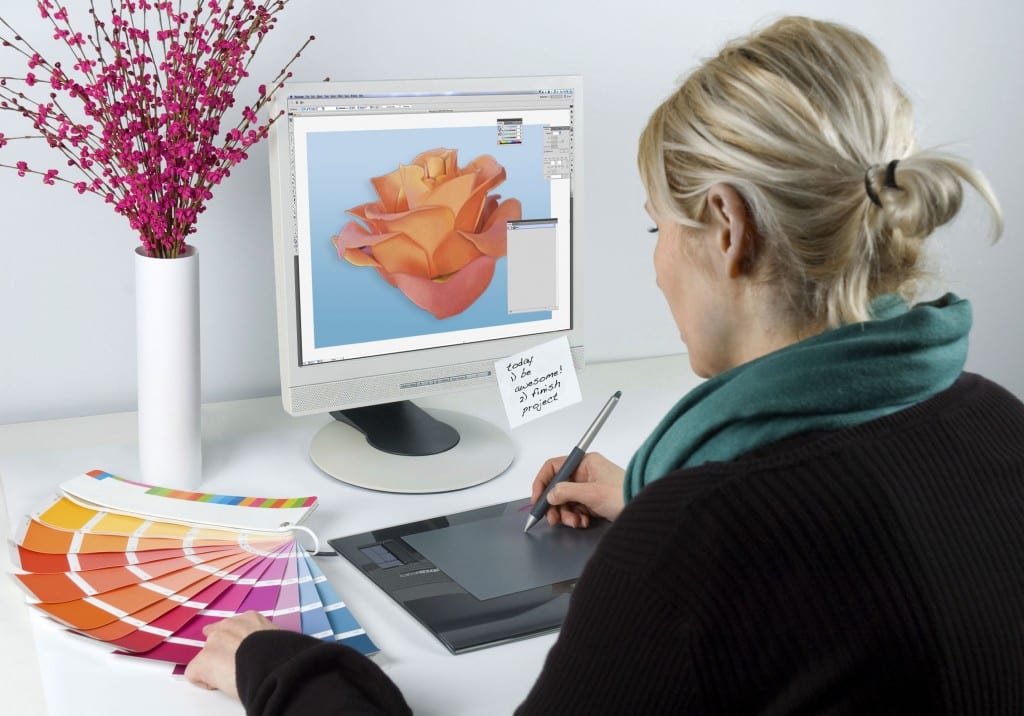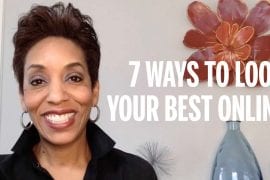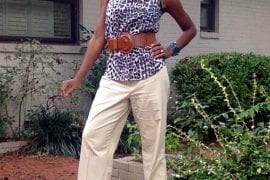New seasons bring new ventures, new efforts, new businesses and overall a new you. If you’re in that mode and are planning to build a stylish new website, this post is definitely for you.
This article isn’t about style or fashion per se but I thought it stylishly necessary to share my website designer experience with you, which started out horrible. In the end, I found an amazing web designer, Belinda Boydston, who turns out to be one of my college suitemates.
When I started conceptualizing my rebrand+website relaunch, I knew exactly what I wanted- from the layout to fonts, colors and menus. Unlike my previous web designer, Belinda listened, understood+delivered. I showed her examples, we had a few phone calls and email exchanges and in about a week, we had it. But getting to the final product was a struggle I never imagine I would experience.
I learned an immense amount of information along the way so I wanted to share it with you in case you’re also planning a re-brand or building a brand new website. Belinda complied a valuable list of things you should know before beginning the process. Her first suggestion is to start with asking questions. “There are certainly many more questions you can ask and don’t be afraid to ask them,” says Belinda. “The more information you have, the better equipped you will be to make an informed decision.”

My Experience– Before we begin, let’s talk about my bad experience. The current catenya.com took MONTHS! My previous web designer took much too long (6 months+) and couldn’t seem to understand how to design my website to look like I wanted. I’m not sure what was going on behind the scenes and I completely understand someone being busy but gosh, I didn’t think it would take that long nor be as frustrating!
In the initial consultation meeting, I explained what I wanted. I was asked for examples of other sites that I like, from layout to font choices, color palettes, and menus. I had a list and examples. My website was already well-established and I had plenty of content, so making decisions about all the rest went rather quickly. I had a basic WordPress site for about two years but was ready for an upgrade as my business ventures began to grow. Initially, I was concerned about how all the content would be handled and transferred to the new site. I was told that wasn’t a problem and the transfer would be seamless but meeting after meeting, I realized the designer couldn’t deliver. I would specifically explain what I wanted but I got the complete opposite. After a series of unsuccessful face-to-face conversations, emails and meetings, my site was a bloody mess! It was in such disarray, I thought there was no hope of putting it back together. To make matters worse, the designer sabotaged my site and stripped it offline without my authorization- which was infuriating! I was powerless. I had no idea someone had the power to do that but they do. If you allow them to host your site, they can do what they want, when they want. You trust people will operate in good faith but sadly, that’s not always the case, especially if they get upset with you and take things personally. Web hosting is one of the topics covered in this post. There are lots more ugly details about my bad experience that I’ll spare you of. Let’s get to what you should know.
Some of this content may or may not apply if you’re starting from scratch, but it could help you know what to expect and what questions to ask a potential web designer. The first absolute must that will help your budget is to search the web for website templates that you like or even other websites you’re attracted to. Look for design, fonts, colors etc. and make a running list. Note details about what you like and why. If you can make decisions on any of these, prior to hiring someone, it will definitely make the experience much better for both you and the designer and you will be happier as the client. It could definitely help you get to what you want a bit faster.
I conducted a Q&A with Belinda Belinda Boydston at bc Designs.
How-to Find A RockStar Web Designer

*What is a Web Designer? a website designer creates the look, feel, and branding of a website. If they have development experience, they will also make a functioning website from a design.
*What questions should a lay person ask a web designer when getting started and how long should it take to build and/or redesign a website?
Length to design a website all depends on the complexity of the website, what other projects the designer is working on and how fast you, as the client, are in making decisions and getting assets to the designer. There are many questions you can ask a web designer, but some main ones are:
1. Do you actually do the website design and do you design from scratch or use a pre-made template?
2. What do I need to provide?
3. Do you charge by the hour or by the project?
4. What are your payment terms? (Deposit, contract etc.)
5. How long will it take to build and launch my website?
6. Are your designs responsive? (which means adapting the layout of website using the same code for optimal viewing and interaction experience on a variety of devices including desktop, tablet and mobile)
7. Will you find photos for my site?
8. Who owns the site design when completed?
9. Do you offer maintenance once the site is complete?
10. Will I be able to make edits to my site? Will I get training on how to do this?
11. Will my domain name and hosting account be registered in my name?
12. Do you include any other services besides design? (such as search engine optimization services, logo design, writing content, etc.)
13. How will you make sure my website is secure and won’t be hacked?
14. Will my website design be search engine friendly?
15. What kind of results can I expect?
*Just because a web designer may look great online by showcasing all the sites they’ve designed, that doesn’t necessarily mean “they” actually did that work. How do you know if a web designer is truly knowledgeable about the craft and if any of their work is proprietary?
Ask the designer questions, do research, find out if they have designed websites in your business field and most importantly, talk to the designer’s former clients. Ask clients what they would have done differently and if they would hire the designer again. Prior research will ensure that you select a designer that is a right fit for your project.
(Ask the web designer if they will be building your site from scratch or using an available template. They can certainly work with a template you buy but ask if they are knowledgeable about the particular one you settle on. One thing I’ve learned is that there are thousands of templates out there that designers use, eliminating their need to constantly code and build a site from ground up.)
*Why is it important to pay for your own hosting?
It’s important that you as the client always pay for your own domain name and web hosting and have each registered in your own name. More often than not, I have had clients come to me who can’t make changes to their website or are having problems with their current designer and want to switch but can’t because either the designer is non-communicative or refuses to relinquish control of the site. Ensuring that you have full control of your domain name and web hosting avoids problems in the future and eliminates the possibility of being held hostage by your web designer.
-Per Belinda’s suggestion, I use HostGator. There are hosting fees, which you’ll find on their site.
*How much can one expect to pay for a) complete redesign b) brand new site from scratch?
Cost for a website varies and depends on several factors:
1). Who the designer is:
Will you be hiring a US agency, off-shore agency or independent web designer? US design agencies will charge the most, with rates up to $200 an hour or more depending on how big the agency is. An off-shore agency (such as in India) can charge anywhere from $10 – $40 per hour; whereas an independent web designer can charge anywhere from $25 an hour for beginning designers to $100 an hour for the more experienced. Rates are not only based on the amount of work, but level of expertise, and where you live. Just remember the old adage: You usually get what you pay for.
2). The features you need:
Each website is unique and has different requirements. The more custom functionality you add, the more expensive your website will be. If you decide you want a custom theme built from scratch as opposed to using a pre-built theme that everyone is using, the cost can double or triple in price. It’s also important that you don’t assume that your needs are simple. Some things may look easy, but are very complicated to implement and vice versa.
3). Are you high–maintenance:
If you expect a website to be done in 3 days, insist on phone communication only, and continually have “scope creep” (which is continuous changes that are not part of the original scope of the project) your web designer more than likely is going to charge you more. I usually can flush out demanding clients fairly easy and will direct them to another designer, but if one slips through the cracks, I make sure to set boundaries and that I am compensated for the extra time.
About Belinda Boydston:
I started bc designs in 2001 with the mission of providing fast and affordable digital design without sacrificing quality or creativity. I firmly believe in stretching the boundaries of imagination and strive to create unique artistic works that effectively communicate a clients’ message to the consumer. My husband, Anthony and I currently live in Gilbert, AZ. We have two adorable daughters, Remington Grace and Kensington Rose, one energetic cattle dog, Marley, two crazy cats, and a beautiful baby boy in heaven who watches over us – Hunter Wyatt.







